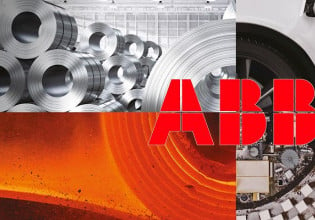New from Emerson: Pilot Operated Relief Valve for Dangerous Chemicals
Emerson releases a new pilot-operated relief valve with a redundant pilot system, for easy maintenance and increased safety in dangerous ammonia and liquid propane systems.
Emerson has a history spanning over 100 years, beginning with manufacturing electric motors and fans, and today becoming a global supplier of product lines including industrial actuators, control systems, lighting, and measurement instrumentation, just to name a few.
Recently, Emerson introduced a new pilot-operated relief valve for storage tanks of liquid propane and anhydrous ammonia. These mediums are very volatile, and if released into the atmosphere, could cause damage to the environment or endanger human life. For these reasons, special relief valves need to be selected and installed in a specific way. The new Fisher 63EGLP-16 will help equipment manufacturers develop safe storage systems for the future.

The new pressure relief valve from Emerson Fisher. Image used courtesy of Emerson
Safety Relief Valves
Any storage vessel, big or small, will have some kind of pressure relief valve. When environmental temperatures rise, the pressure inside the vessel will also rise. If this excess pressure isn’t vented into the atmosphere or another contained part of the system, the vessel could rupture and cause injury or death to surrounding people or damage equipment. A pressure relief valve typically consists of a spring that pushes a disk or piston against an internal seal. When the pressure inside the vessel rises above the spring force, the valve opens. This is exactly how the pressure regulation on an air compressor tank operates.
A pilot-operated relief valve works similarly only instead of a spring, system pressure is piped from the inlet to behind a disk or dome. The dome has a larger cross-section area than the valve seat, so when the pressure is equal, the dome pushes against the valve seat. Once system pressure is reached, the pilot valve closes, stopping the dome pressure from rising. If the pressure inside the tank climbs above the dome pressure, the pilot will open, allowing the tank pressure to vent through the valve. These relief valves typically have a modulation release or a pop-style release, unlike spring-operated relief valves that can bounce as the pressure is vented.

The actuation of a pressure relief valve shows normal pressure conditions on the left, while the middle and right images show the action of the valve when the set pressure is reached, and the valve opens. Image used courtesy of Leser
Emerson’s Fisher 63EGLP-16
This new pilot-operated relief valve is designed for use with pressurized bullet tanks that store liquid propane and anhydrous ammonia. These types of storage tanks require a much higher level of safety than most standard pressurized storage tanks. With increased safety comes redundancy, The 63EGLP-16 has a dual pilot array allowing maintenance staff to service one pilot while the other pilot is still operational. The same redundancy is true in operation: if one pilot fails, the redundant pilot will still operate normally.
Installation is made easy with the use of a standard 2” NPT nipple pre-installed by Emerson. This feature allows for the 63EGLP-16 to easily replace existing multi-ported valves. Emerson stipulates that the pilot relief valve must be installed directly on the tank and no isolation valve may be used between the tank and the PRV. Much like any safety device on the market, reliable operation over a long lifecycle is critical.
Emerson used a similar design that has been in use for well over 10 years, so the Fisher 63EGLP-16 promises to meet this requirement with ease.






